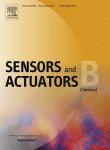Ver ítem
- xmlui.general.dspace_homeCentros e Institutos de InvestigaciónCIRN. Centro de Investigaciones de Recursos NaturalesInstituto de Recursos BiológicosArtículos científicosxmlui.ArtifactBrowser.ItemViewer.trail
- Inicio
- Centros e Institutos de Investigación
- CIRN. Centro de Investigaciones de Recursos Naturales
- Instituto de Recursos Biológicos
- Artículos científicos
- Ver ítem
Nanostructured voltammetric sensor for ultra-trace anabolic drug determination in food safety field
Resumen
A sensitive electrochemical sensor for clenbuterol (CL) determination in bovine urine samples was designed. This drug was originally developed for the treatment of respiratory pathologies. However, in the livestock industry, CL has been used as growth promoter because it stimulates the muscle growth and lipid degradation. The drug residues accumulated in animal tissues represent a potential risk for the human health. Subsequently, the development of a
[ver mas...]
A sensitive electrochemical sensor for clenbuterol (CL) determination in bovine urine samples was designed. This drug was originally developed for the treatment of respiratory pathologies. However, in the livestock industry, CL has been used as growth promoter because it stimulates the muscle growth and lipid degradation. The drug residues accumulated in animal tissues represent a potential risk for the human health. Subsequently, the development of a fast and simple method for the CL quantification employed to detect its abuse in livestock production is an attractive analytical challenge.
The proposed method was based on the use of a screen printed carbon electrode (SPCE) modified with multiwall carbon nanotubes (MWCNTs) in a matrix of chitosan (CH) on gold nanoparticles (AuNPs) previously incorporated by electrodeposition process. The MWCNTs-CH/AuNPs/SPCE was characterized by cyclic voltammetry, X-ray diffraction and scan electron microscopy.
With the aim to carry out the CL determination, a pre-concentration procedure was required. For this purpose, we employed anti-CL antibodies immobilized on magnetic microparticles (MPs) as bioaffinity support to capture the drug present in the sample. This support was exposed to a desorption process. Later, the electrochemical detection by square wave voltammetry (OSWV) was performed. The sensor exhibited excellent performances with a linear response range in concentrations from 0.01 to 6 ng mL−1. The detection and quantification limits obtained were 0.003 and 0.01 ng mL−1, respectively with an analysis time of 19 min and a R.S.D. below 5.8%. As a conclusion, we can claim that the results obtained by the proposed sensor were successful.
[Cerrar]

Autor
Regiart, Daniel Matias Gaston;
Pereira, Sirley Vanesa;
Spotorno, Viviana Graciela;
Bertolino, Franco Adrián;
Raba, Julio;
Fuente
Sensors and Actuators B: Chemical 188 : 1241-1249 (November 2013)
Fecha
2013-11
ISSN
0925-4005
Formato
pdf
Tipo de documento
artículo
Palabras Claves
Derechos de acceso
Restringido
 Excepto donde se diga explicitamente, este item se publica bajo la siguiente descripción: Creative Commons Attribution-NonCommercial-ShareAlike 2.5 Unported (CC BY-NC-SA 2.5)
Excepto donde se diga explicitamente, este item se publica bajo la siguiente descripción: Creative Commons Attribution-NonCommercial-ShareAlike 2.5 Unported (CC BY-NC-SA 2.5)

